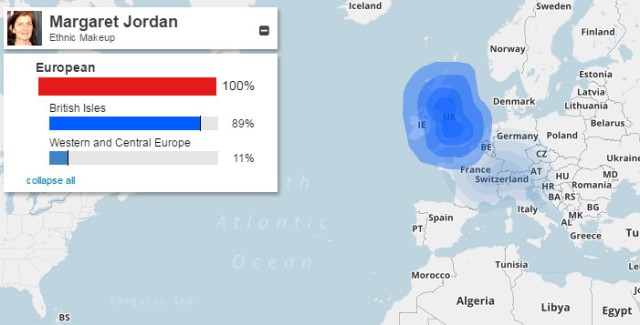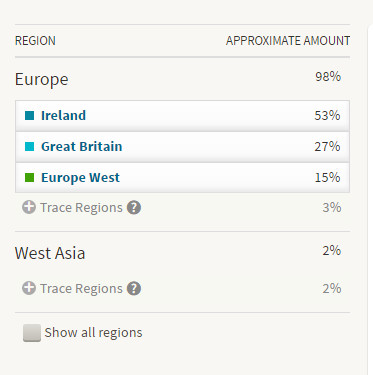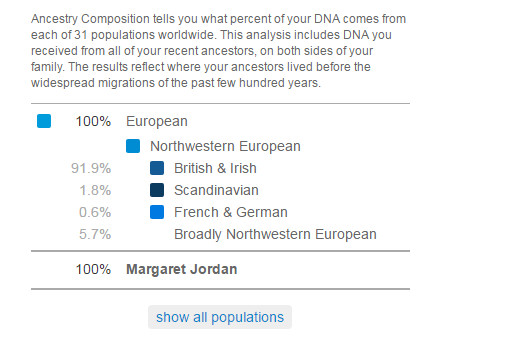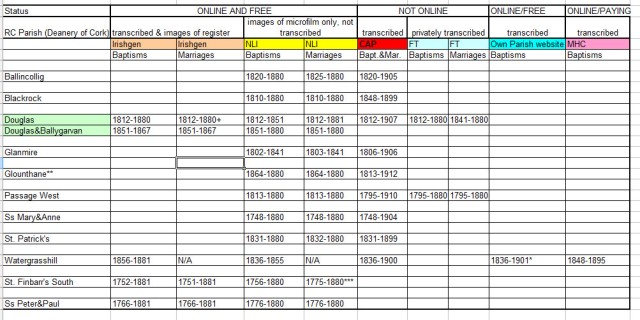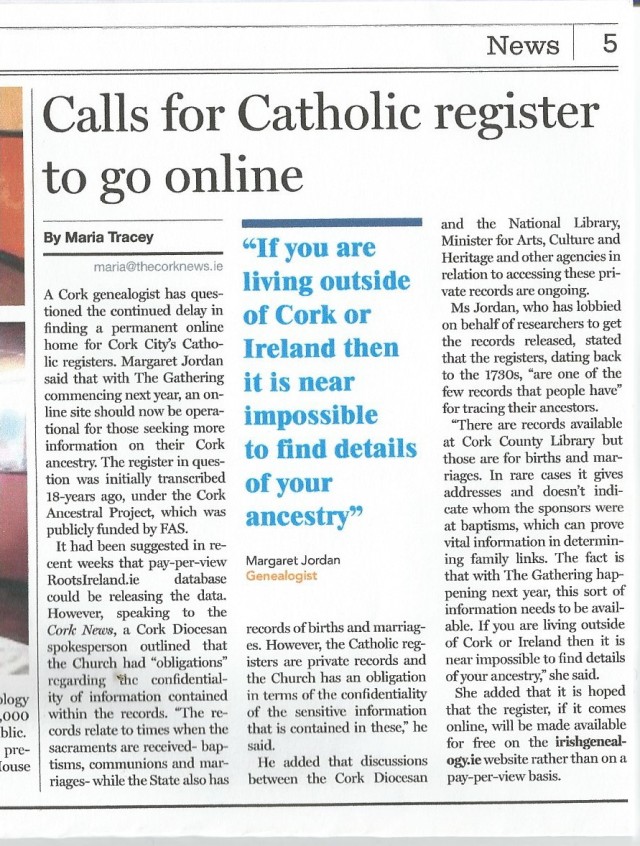People who know me well, know that I have been searching for my father’s ancestry since 1997. It has been a long road, full of ups and downs, dead ends and eventually success.
It all started after my mother died in 1995. My Dad and I had some heart to heart chats during our grieving for my mother, his wife. My Dad had been fostered as a baby in Cork City, Ireland in 1926. My father had never been willing to talk about his biological family. It had been a mystery to me. In 1995 I learned that my Dad had no idea who his biological family were and that he had always wanted to find out and ultimately discover who he was.
He was brought up by a kind family at Penrose Square (now demolished), in the heart of Cork City. My Dad was Gerard on his baptismal certificate, obtained from Ss Peter and Paul Church, and his mother was named as Ellen Murphy. No father’s name was provided at the baptism and the sponsors were members of the foster family. The church register, which I have subsequently seen, states that he was “illegitimate”. The other document which my father had, was his birth certificate, on which his father’s name was given as Daniel Shea and his mother’s name was given as Ellen Murphy. The civil birth certificate implied that Daniel and Ellen were a married couple when my father was born and that my father had in fact been born at Penrose Square, Cork City. My father assumed that the information on this certificate was made up by the foster family to cover up the truth of my father’s birth. The fact that my Dad’s birth was registered three months after his birth indicates that there may have been a delay in deciding what to put on the certificate. My father always said that his foster family would “lie to the state but they wouldn’t lie to the church”. By this, he meant that the foster family were very “religious” (Roman Catholic) and fearful of the Catholic Church but they didn’t feel the same way about the state! My father did believe that his mother was actually named Ellen Murphy as this name appeared on his baptismal record and his civil birth record.
While my father was a young child, he was called Gerard Ryan, Ryan being the surname of the foster family. It was only when he went to secondary school, when he had to produce his birth certificate, that he discovered his father’s surname, was Shea. So, he became Gerard Shea and later Gerard O’Shea as, like most Sheas, he added the O’ to Shea. My father told me, that as an adult, he tried to find out who he was but he had no way of doing so. The foster family were tight lipped and would not willingly reveal anything about my father’s biological family. My father did not know anything about his parents or ancestry.
My father wasn’t convinced that he was really an O’Shea on his paternal line…maybe the name was a complete fabrication? My father did have some clues which he had apparently gleaned from his foster family. He had a notion that his father was some kind of “gentleman farmer” and that his mother’s family had longevity in their family. He had been told at an early age, when he asked about his parents that “they were dead”. Another story my Dad had was that his father had joined the Australian navy.
Two years after my mother died in 1995, my father became ill and while he was recuperating after surgery, in a nursing home in Cork, I spent some time in the Cork City library trying to find answers to his question “who am I”. In 1997, with very few (if any) online genealogical records, I perused the local Co. Cork directories looking for something which might fit what my father knew. In one of the directories, I found a Luke Shea in South Cork in the 1800s, who was a “gentleman farmer” and I thought I had hit the jackpot. I relayed this information to my Dad when I visited him in the nursing home, that day. We were excited. It was the first lead I had found. Over the next several years we explored this lead, making contact with descendants of this Shea family, who lived outside Ireland. However, we could not find a Daniel Shea in this Shea/O’Shea family. But, then again, how did we know if my father’s father was really Daniel Shea. We compared height and build, hair and eye colour and other genetic traits between my Dad and a potential half sibling. We studied photographs of family members looking for similarities.
My Dad and I enjoyed some “field trips” together searching for more information to help with our research. On one such outing, I can remember that we got wet in the rain and ended up in a pub, next to an open fire, warming up over hot coffee. My Dad, who was retired also made trips on his own. He went to the National Library in Dublin and other repositories. In his retirement, he found a new interest. We made trips to the Registry of Deeds, National Archives and other repositories building up knowledge of the Shea family which we thought was ours.
My Dad and a potential half brother did get to meet up in a small town in the west coast of the USA in 2000. At this stage, my father was convinced he had found his family and we continued to spend time delving into their family history, which actually was very interesting, given that they had been big landowners in the 1800s. To cut a long story short, my father and his potential half brother did a sibship test in 2002 but the results were vague and we discarded them as unreliable.
I became aware of y-chromosome DNA testing and in 2003, my Dad did a yDNA test with Family Tree DNA. At that time it was a 25 marker test. Only one other O’Shea, who lived in the USA, had tested with Family Tree DNA at that time, and he and my Dad did not match each other. Shortly afterwards, by co-incidence, an O’Shea man from Cork tested and matched my Dad 25 markers out of 25. We didn’t understand what this match meant in terms of relatedness. This O’Shea man who matched my Dad had an extensive family tree which did not seem to have any connection with the other O’Shea family we had found and still believed was “ours”.
Over time, another O’Shea from Cork did a yDNA test and he also matched my Dad and the other O’Shea. By late 2004, all three had upgraded to 37 markers and there were a few mutational differences in their respective results. Yet, they were close matches. Over time the O’Shea yDNA Project evolved and there is a subgroup of O’Sheas in it, with strong affiliations with NW Co. Cork, which includes my Dad.
My father died unexpectedly in December 2004. I was devastated but felt my Dad had known that he was an O’Shea before he died. yDNA had confirmed that his paternal line was Shea/O’Shea. It took me a long time to get a member of the O’Shea family, to whom we had originally thought we were related (but had no solid evidence to back this up), to do a yDNA test. This lack of definitive evidence had niggled at me but when my Dad was alive I couldn’t face up to it as my Dad thought he had found his family. When the yDNA test results came back for this O’Shea, I was shocked to learn that there was no yDNA match. My Dad and the descendant of the 19th century landowning O’Shea family were NOT related on the paternal line. I faced the cold reality and was glad my Dad had not had to cope with the enormous disappointment that we had failed to find his close O’Shea family. On the positive side, I did know he was an O’Shea and that he was part of the NW Cork O’Shea group in our O’Shea yDNA Project.
Over time, I kept trying to establish a paper trail relating to my father’s fostering. I looked for information in the Board of Health and Public Assistance records, held in the Cork Archives. These records can contain information about children who were “boarded out” by the Health Board. Unfortunately, the volume relating to 1926 (the year of my father’s birth) was not extant. The Cork Archives suggested that Department of Local Government and Public Health reports on inspection of foster homes might be in the National Archives. I contacted the National Archives but was told that there were a lot of records which might include such material but they were not accessible as they weren’t catalogued.
In my search, I also contacted Barnardos but they said that they only deal with children who grew up in institutions. They directed me to the Cork Fostering and Adoption Service section of the HSE but they could find nothing useful for me in their “Boarded Out records”. I also contacted the Records Management Unit of the Department of Health and Children, Hawkins House, Dublin. They were able to check their Access of Institutional and Related Records (AIRR) database which are an index of all children in the care of the state, including institutions and boarded out children (from the 1930s to the 1980s).
I also gathered all the birth, marriage and death data I could, on men with the name of Daniel Shea/O’Shea who lived in the area from which my Dad’s yDNA matches originated. yDNA tests were upgraded to 67 markers and still it was impossible to tell which particular family was closest to mine. yDNA eliminated many O’Shea lines but so many NW Co. Cork O’Sheas were close matches to my Dad at 67 markers. What about all the other O’Sheas who hadn’t tested! I worked on paper trails, with much help from the two O’Sheas who matched my Dad originally back in 2003. I kept gathering information on potential Daniel O’Sheas hoping that my father’s father was a Daniel as well as a NW Cork O’Shea. My task seemed endless.
With the advent of Family Finder, an autosomal DNA test which is able to identify matches an all ancestral lines up to about 5th cousin, I decided to try this test. As my Dad’s DNA sample was limited, I did the test myself in 2012 and set about investigating my matches, in the hope of finding matches on my grandfather’s (or grandmother’s) ancestral lines. I had a problem deciding which side of my ancestry the matches were on. My mother was Welsh so that helped a bit in separating out the matches. However, many people whom I matched randomly had ancestry which included Ireland and Wales or didn’t know where in Ireland their ancestors came from. Also, these “random” matches were not close matches and I had no real paper trail to work with for my paternal side of the family. I then started to recruit people who had matched my Dad on yDNA to do autosomal DNA testing. Lo and behold, in 2013, I struck the jackpot. I got a “first to second” cousin match with one of them.
In 2013, I also managed to get my Dad’s remaining DNA sample used for Family Finder with the help of Bennett Greenspan, CEO of Family Tree DNA. This, combined with other targeted autosomal DNA tests, enabled me to conclude who my father’s father was. Finally, I had closure on this side of my research. I now knew my Dad’s paternal line and I have a family tree for “my” O’Sheas. I am just sorry that my Dad did not live long enough to enjoy it.
Now my search is on for my father’s mother. This is proving difficult but armed with my DNA tools, I am confident that I will succeed.
Addendum: I did find who my father’s mother was, in 2021. This could not have happened without DNA. A close maternal autosomal DNA match in the summer of 2021, was the key to my success. So, 24 years after I started with my research, I have completed my quest. It has been a long long search.










